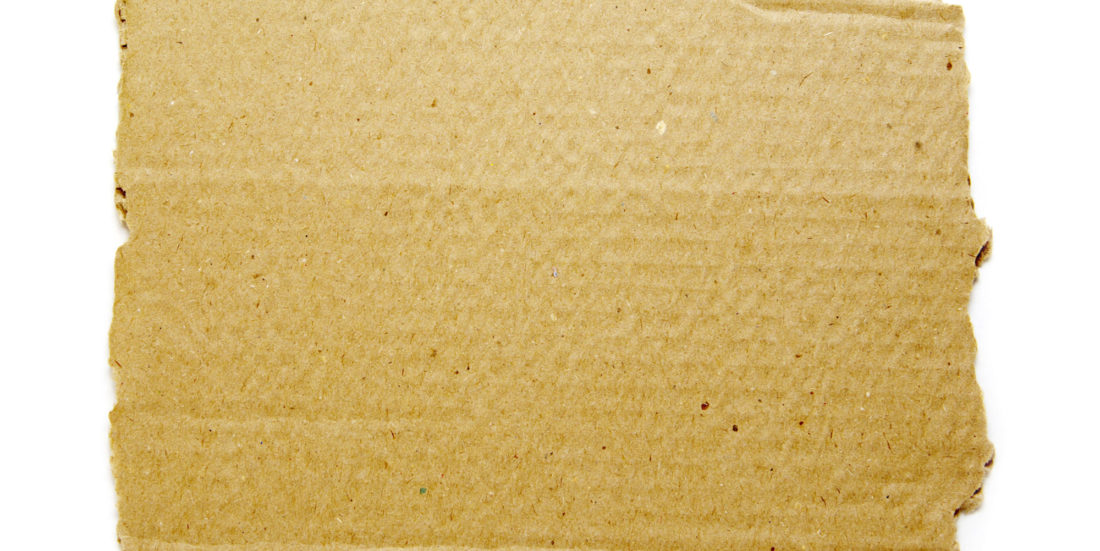Paper chase
Guy Lönngren builds recycled student housing out of cardboard.
MINI-CV GUY LÖNNGREN (64)
- Educated at The University of Art and Design, Helsinki
- Owns his own design company and works mainly with houses, boats, buses and lorries
- Professor at the Department of Product Design, NTNU
THE TECHNOLOGY OF the future was the theme for Technoport fair in Trondheim in the autumn 2007. One of the biggest attractions was a house with a playful design that had been built indoors in full scale: a 35-square-metre fully furnished student residence. Wind and watertight, good and warm, and set up in just a few hours.
The material? Cardboard, cardboard, and more cardboard. Along with a little plastic and lots of air. This cardboard house became the subject of a great deal of discussion in the Norwegian media. And the question that was asked was: can this really work?
It absolutely can, says the man behind the cardboard house. His name is Guy Lönngren, a professor of product design at the Norwegian University of Science and Technology. He conceived and developed the idea, along with his students and colleagues, and Garvin & Solem, a company that owns the rights to a new kind of cardboard panel. The panel is composed of just paper and air in a special kind of corrugated cardboard construction. It is light, strong, and bendable; in addition it is 100 per cent recyclable. An uncommonly future-oriented and useful product thought the design professor when almost by chance he stumbled upon the material.
“How did you happen to come up with the idea to make a cardboard house?”
“I have been working with light construction during my entire professional life. And cardboard is fine material: it’s simple, cheap, environmentally sound, recyclable and easy to work with. All you need is a knife,” Lönngren says.
“Cardboard is a fine material: all you need is a knife.”
“Last year one of our student projects was about using cardboard for furniture and other interior elements. We had a student project last year, where we built house models and furniture and everything possible out of cardboard. We stumbled upon this new type of cardboard panel, which gave us the idea about a full-scale student residence,” he adds.
“You can’t really live in a cardboard house in wintry Norway, can you?”
“In principle, it is possible. Much of what we already use outdoors today is a blend of wood and cardboard. Cardboard can be impregnated, waxed and covered with plastic, it can be used as foundation material, and it can, in principle, be made as thick and strong as you want. Cardboard construction with air provides good insulation,” Lönngren explains.
“But can it have the same lifespan as a house made from wood or brick?”
“That’s the trick! Products have ever-shorter life spans, and we were in search of something that could be recycled. Look at what has been built in Scandinavia in the 1960s and 1970s: neighbourhoods that were so horrible that no one wants to live there today. But they’re so solid that they can’t be torn down or recycled. Imagine instead if a student who came new to the city was met by a car with a trailer.
There on the trailer is a fine new house for him or her, packed flat, and ready to be set up in the student village with just a few hours of work. The whole thing can be recycled when the student is finished with his or her studies. Five per cent of the weight of a regular house, five per cent of the raw materials and energy use, and a five-year lifespan – flexible, resource friendly and climate friendly.”
“It’s first and foremost climate and resources that concern you?”
“Changes in both climate and the world’s situation demand new solutions and new standards. If countries like China and India are going to reach the same living standard as the west, we must all switch over to a recycling economy based on sustainable resources.
We can decide to look at this pessimistically, and complain about the fact that we won’t see our own living standards grow the way they have in the past. Or we can choose to be optimistic, and think that now we must make good use of our production and our knowledge in a more effective way – to use today’s knowledge to solve what we think will be tomorrow’s problems,” Lönngren says.
“And you think that student villages built from cardboard are a smart way to go?”
“The future’s cardboard house will not just be built of cardboard, but of different recyclable materials that together create a sensible and economic whole. My job is to first and foremost revive the interest in recyclable materials. We should look at what we have for renewable resources where we live. And here in Scandinavia, wood is our most important renewable resource.”
“It’s tempting to call what you’re doing a real ‘paper chase’…?”
“You absolutely can, because I think that ‘chasing paper’ is an important task for tomorrow’s product development world,” he concludes .
By Lisa Olstad






